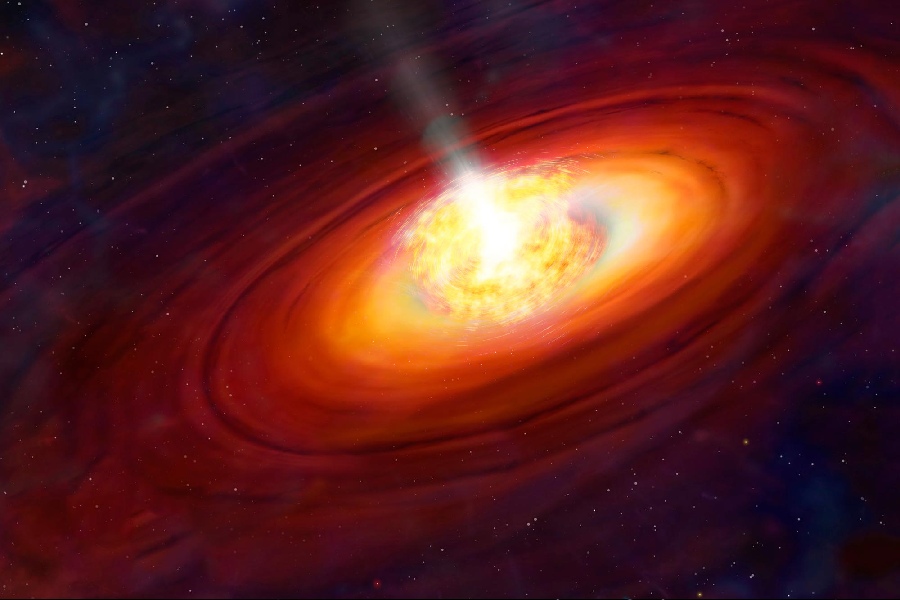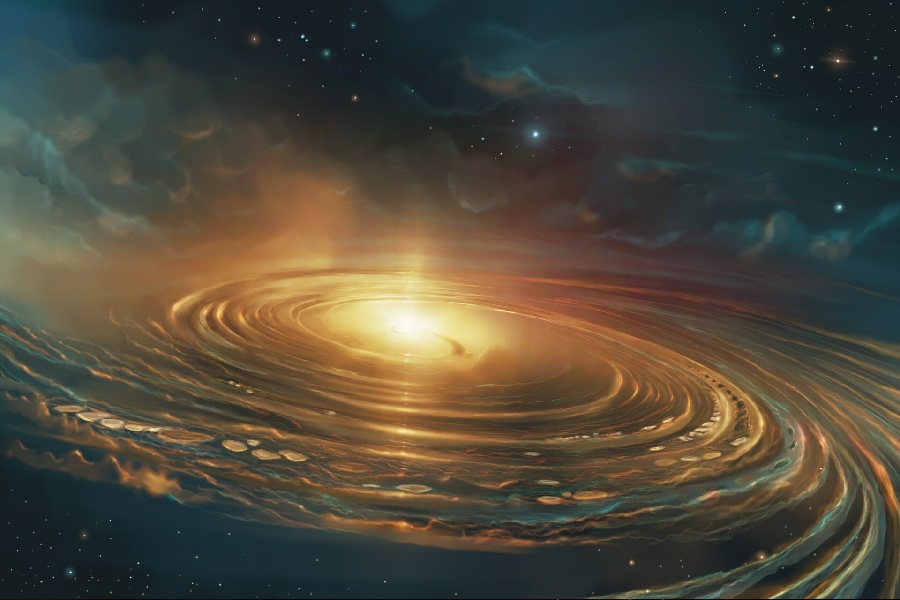In stellar nurseries where stars are born, vast clouds of dust and gas collapse into dense clumps known as protostars. These hot spinning protostars glow from within, gathering material and reshaping it into large swirling structures that may or may not become stars. So, do all protostars become stars?
Let’s delve into protostars’ beginnings and early stages, understanding what helps or hinders their growth. We can learn much about their potential to evolve into stars by studying their masses, temperatures, and surroundings.
We’ll look at different ideas from experts about what factors contribute to young protostars’ success or premature end before they fully develop into stars.
Come with us as we explore the mysteries of early stellar development. We’ll share the latest discoveries, shedding light on whether protostars are destined for greatness as full-fledged stars or if they fade away prematurely in the vastness of space.

Do All Protostars Become Stars?
No, not all protostars become stars. Some lack sufficient mass to trigger nuclear fusion in their cores, which is necessary for stellar ignition. These objects may remain as brown dwarfs or fail to sustain fusion, becoming sub-brown dwarfs.
While many protostars evolve into stars, it’s not guaranteed for all. Factors such as mass determine a protostar’s fate. This influences whether it continues its journey to become a full-fledged star or ends up as a different type of celestial object.
Low-mass protostars and their fate
Low-mass protostars undergo a gradual contraction over approximately 50 million years. During this period, gravity compresses the core, leading to a rise in temperature and density.
As more matter falls inward, the rotation of the protostar increases. Eventually, the core reaches a critical temperature and pressure, initiating continuous hydrogen fusion. This fusion process generates energy, which stabilizes the protostar, marking its transition into a main sequence star.
The contraction ceases as the energy from core fusion balances the gravitational forces pulling inward. Thus, the lengthy journey that commenced with the collapse of giant molecular clouds culminates in the birth of mature stars powered by nuclear fusion in their cores.
As the protostar diminishes in size, its rotation accelerates, and its light output intensifies. Finally, stable burning commences, indicating that the star has entered the main sequence, and the contraction into a fused low-mass star concludes.
High-mass protostars and their fate
High-mass protostars transform rapidly, becoming main sequence stars in less than 500,000 years due to their hot, dense cores. They form in competitive clustered environments where accretion persists during ignition, and they shine brightly while pushing away residual gas.
These massive stars have a short main sequence phase, burning quickly and ending explosively within just a few million years. Their lives are fast-paced and intense compared to sun-like stars, meeting violent and cataclysmic ends.
The chaotic formation clusters speed up their evolution beyond what isolated low-mass stars experience. Fusion ignition begins amidst swirling infall, followed by intense radiation that ionizes bubble regions around the emerging massive star.
In the end, supernovae and dense collapsed remnants mark the conclusion of their brief lives. These lives flash by quickly relative to the longevity of lighter stars.
Formation of Protostars
Molecular clouds first condense into dense cores, drawing in more gas and dust, which makes them unstable. These cores then fragment into smaller pieces, kickstarting the formation of protostars. As material accumulates around these fledgling stars, density and temperature rise until nuclear fusion sparks, marking the birth of new protostars.
This marks the culmination of the initial formation process triggered by collapsing molecular clouds. The journey toward protostar formation involves several stages: cloud contraction, core collapse, fragment seeding, and matter accretion. Ultimately, ignition sets the stage for protostars to emerge.
As the gas falls inward, it gains angular momentum, causing the protostellar seeds to spin faster during accretion. This accumulation process continues, raising pressure and heat until fusion is sparked.
This transformation solidifies the origins of collapse as protostellar seeds grow into luminous protostars through accretion. The fracturing of unstable cores within large clouds serves as the genesis for sparking the creation and growth of protostars.

Factors Affecting Protostar Evolution
The size and stability of the original molecular cloud core decide how well it can create new protostars. Larger cores contain more material to nourish the collapsing fragments forming protostellar seeds.
Colder cores, with less thermal pressure, can shrink faster because gravity faces less resistance. Weaker magnetic fields also speed up collapse instead of providing support.
When gas flow is smooth, gravity can better bind the seeds, while turbulence disrupts the process. Thus, specific conditions in larger cores support the formation of protostars.
Cores with low internal pressure, feeble magnetic fields, and smooth gas flow offer the perfect environment for gravitational collapse, leading to the birth of new protostars. So, at what point does a protostar become a star?
The moment a protostar becomes a star depends on whether the accretion process can build up the seed’s mass to the point where fusion ignition can occur. Cores with the right conditions can produce protostars through fragment collisions, while conflicting factors can prevent ignition.
Types of Stars Formed From Protostars
Most protostars become low-mass main sequence stars that fuse hydrogen steadily for billions of years. Stable core burning generates energy to balance gravity, resulting in normal stars like our Sun. Meanwhile about 10% of protostars form high-mass stars over 10 times more massive than the Sun.
These giant stars burn rapidly and die explosively within millions of years due to extreme temperatures and pressures. In some cases, protostars fail to achieve the threshold mass needed to ignite fusion. These become brown dwarfs – failed stars that slowly fade and cool without ever shining as sustained hydrogen burners.
Normal Stars
Stars formed from protostars typically exhibit characteristics and attributes based on their mass and initial conditions. Low-mass stars, like red dwarfs, evolve slowly, fusing hydrogen into helium through the proton-proton chain. They have long lifespans, remaining on the main sequence for billions or even trillions of years.
Intermediate-mass stars, such as our Sun, follow a similar path but with shorter lifespans, spending several billion years on the main sequence before becoming red giants.
On the other hand, high-mass stars evolve rapidly. They quickly burn through their nuclear fuel and end their lives in spectacular supernova explosions or form black holes or neutron stars.
Throughout their evolution, stars may undergo stages of expansion, contraction, and fusion. Ultimately, depending on their mass, they may stabilize as a white dwarf, neutron star, or black hole, completing their lifecycle.
Conclusion
As we conclude exploring protostars’ origins and fate, we hope you gained insight into whether these stellar infants become main sequence stars. By tracing the evolution from molecular clouds, we followed protostars facing obstacles like accretion bursts.
So, do all Protostars become stars? No, some are destined for cosmic fame as shining beacons granting life around worlds. Others fade as failed stars called brown dwarfs drifting dimly between brighter stars and planets.
As explored, not all protostars have what it takes to become sustained hydrogen-fusing stars. Following the journey from cloud core to final fate, we better comprehend the forces deciding if a protostar will flare across the cosmos or fade into the void.
